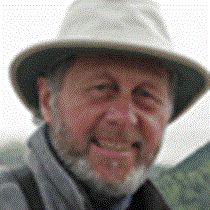The San Juan Islands, Washington
The weather is never bad around southern Vancouver Island and northwestern Washington. Oh, it may be nasty for a few days, but mild temperatures and calm seas usually prevail, especially in autumn. Today was no exception. Juan de Fuca Strait was glassy. A glowing sun arose over the Cascade Range to the east. Mount Baker, a quiet volcano still caked in snow, loomed in the distance. We left Victoria behind and pushed our way through whirling tidal rapids off the south tip of San Juan Island. Sea lions, gulls, cormorants and rhinoceros auklets fed in the churning waters. Two nocturnal-migrating songbirds that had landed on our ship as dawn broke, flew off toward land, one narrowly evading a Heermann’s gull (a summer visitor from the Gulf of California) that was looking for a morning meal. A thin mist drifted among the conifers, oaks and arbutus trees, but the sky above was blue. The sun would warm us.
We had left Canadian waters, so now had to clear customs into the USA, this time at Friday Harbor on the east side of San Juan Island. Sleek sailing craft and powerboats rested in the sunlight. Many yachtsmen from the western states leave their boats here year-round, flying in to vacation among the magnificent array of island and rocks that join two friendly countries.
The Whale Museum in Friday Harbor is a must see! The complete genealogical history of the Southern Resident Community of killer whales is displayed here. We would search for some of the pods later in the day, but to no avail. We had seen killer whales on three occasions on this journey, so were not disappointed. Also at the museum are historical videos and documents of the “early” days of killer whale study, which really began here in the Pacific Northwest as recently as the late 1960s. Prior to that, the species was feared and persecuted; shot by fishermen whose nets they would damage and who assumed them to be of great danger to human life. But the whales persisted and, now given total protection, have come back. Our knowledge of other creatures gains respect and protection for them. The question remains, however: can they continue to thrive as more pressures are put on our ocean fisheries, and as we continue to add chemicals and toxins to their suffering marine environment? A noon hour forum on the benefits and problems associated with salmon farming touched on this matter. But we know that, having seen and been thrilled by our ocean’s inhabitants, we will each do our small bit to ensure that our grandchildren can experience the same thrills.
We had a final outing this afternoon, kayaking the shoreline of Stuart Island and hiking through the dry Garry oak/madrone forest. The big trees here make for bigger memories.
The weather is never bad around southern Vancouver Island and northwestern Washington. Oh, it may be nasty for a few days, but mild temperatures and calm seas usually prevail, especially in autumn. Today was no exception. Juan de Fuca Strait was glassy. A glowing sun arose over the Cascade Range to the east. Mount Baker, a quiet volcano still caked in snow, loomed in the distance. We left Victoria behind and pushed our way through whirling tidal rapids off the south tip of San Juan Island. Sea lions, gulls, cormorants and rhinoceros auklets fed in the churning waters. Two nocturnal-migrating songbirds that had landed on our ship as dawn broke, flew off toward land, one narrowly evading a Heermann’s gull (a summer visitor from the Gulf of California) that was looking for a morning meal. A thin mist drifted among the conifers, oaks and arbutus trees, but the sky above was blue. The sun would warm us.
We had left Canadian waters, so now had to clear customs into the USA, this time at Friday Harbor on the east side of San Juan Island. Sleek sailing craft and powerboats rested in the sunlight. Many yachtsmen from the western states leave their boats here year-round, flying in to vacation among the magnificent array of island and rocks that join two friendly countries.
The Whale Museum in Friday Harbor is a must see! The complete genealogical history of the Southern Resident Community of killer whales is displayed here. We would search for some of the pods later in the day, but to no avail. We had seen killer whales on three occasions on this journey, so were not disappointed. Also at the museum are historical videos and documents of the “early” days of killer whale study, which really began here in the Pacific Northwest as recently as the late 1960s. Prior to that, the species was feared and persecuted; shot by fishermen whose nets they would damage and who assumed them to be of great danger to human life. But the whales persisted and, now given total protection, have come back. Our knowledge of other creatures gains respect and protection for them. The question remains, however: can they continue to thrive as more pressures are put on our ocean fisheries, and as we continue to add chemicals and toxins to their suffering marine environment? A noon hour forum on the benefits and problems associated with salmon farming touched on this matter. But we know that, having seen and been thrilled by our ocean’s inhabitants, we will each do our small bit to ensure that our grandchildren can experience the same thrills.
We had a final outing this afternoon, kayaking the shoreline of Stuart Island and hiking through the dry Garry oak/madrone forest. The big trees here make for bigger memories.



